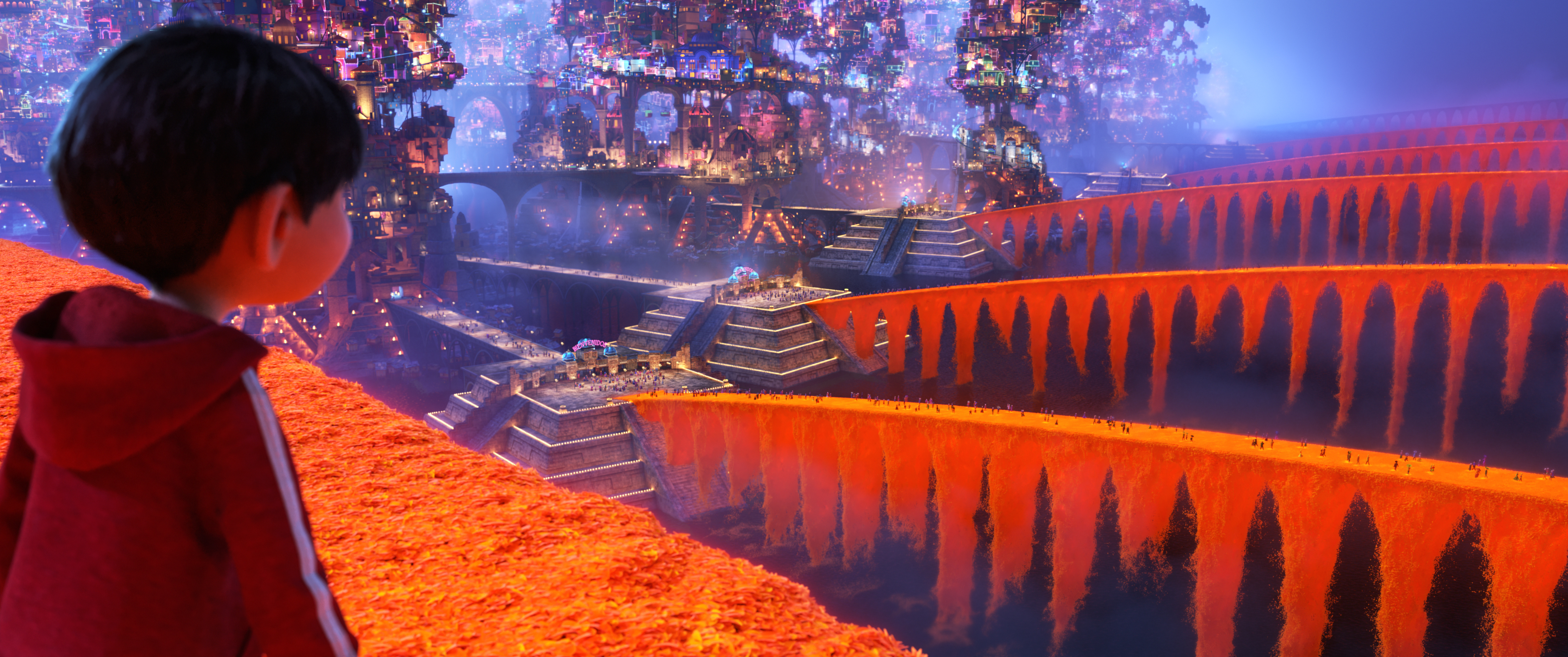Today Disney•Pixar’s Coco makes its debut in U.S. theaters. The film has already become the highest-grossing film of all time in Mexico, earning 965M pesos since its October 27 release, surpassing the 827M pesos earned by The Avengers during its entire run.
Coco tells a story rich with universal themes surrounding family and following your dreams, but the film also boasts dazzling animation and innovative visual effects that transport audiences, along with young protagonist Miguel, from the Land of the Living to the Land of the Dead.
The two worlds are connected by a stunning bridge of marigold petals, that, director Lee Unkrich explains, was inspired by the Coco filmmakers’ research trips to Mexico. “When we were invited to take part in Día de Muertos in Mexico,” says Unkrich, “we saw paths made of marigold petals that started out in the streets and ended at ofrendas—altars with family pictures, favorite foods and special objects. We learned that it was all done to help guide the spirit of a family’s loved one home.”

With a shape that recalls ancient aqueducts still found in Mexico and a brilliant orange color intended to symbolize family connection, the marigold bridge is brought to life using the latest animation technology. The marigold petals are actually light sources, says Danielle Feinberg, director of photography for lighting. “We have a new kind of light called a particle light that can have many, many points on it,” she says. “Our special effects team gave us a way that we can automatically know which petals a person is stepping on as they cross the bridge and control the glow the petals emit creating little spots of light as someone walks through.”
The team wanted the bridge to feel as though it were alive: The characters kick up marigold petals as they walk through them, while the outer portion of the bridge features petals that rain down. The effect is made possible with a set of lights and shading signals that pulse on and off throughout the bridge. Effects supervisor Michael K. O’Brien and his team also included a trough of petals in the characters’ paths as they walk across the bridge to make it realistically appear that the petals have been displaced. “And then we track a light that sits underneath the petals that adds the glow as a character steps down,” O’Brien explains.
In visualizing the Land of the Dead, Feinberg says the challenge to the team was to “make this world something fantastical that no one’s ever seen.” The land, inspired in part by the hilly Mexican town of Guanajuato located northwest of Mexico City, towers high above the ground. It is always nighttime in the Land of Dead, necessitating a staggering number of light sources to illuminate a scene that includes street lights, lights for the plazas, architectural lighting on bigger buildings, blue lights along the trolley tracks, pinlights that outline the edges of many buildings, headlights on the moving vehicles, lights on the construction cranes and much more.
“We’ve never had a shot with 7 million lights in it before,” Feinberg, told Disney twenty-three, the quarterly publication of D23: The Official Disney Fan Club. New software allowed the filmmakers to group the lights, which would previously have had to be placed and adjusted individually by a technician. “We figured out a way to introduce a single light—but give it a million points,” says supervising technical director David Ryu. “The renderer sees it as one light, but we see a million lights.”
Though Coco’s story emphasizes the importance of remembering the people who have come before us, it is fitting that the film has been brought to life via new techniques and software. “We really wanted to explore the family bonds that tie us to the generations that came before us,” Unkrich notes. “This story is about celebrating our past—even as we look to the future.”